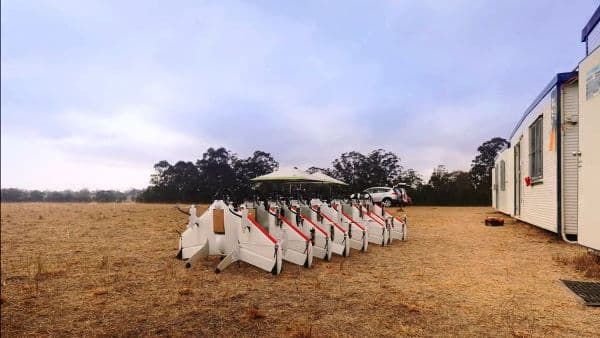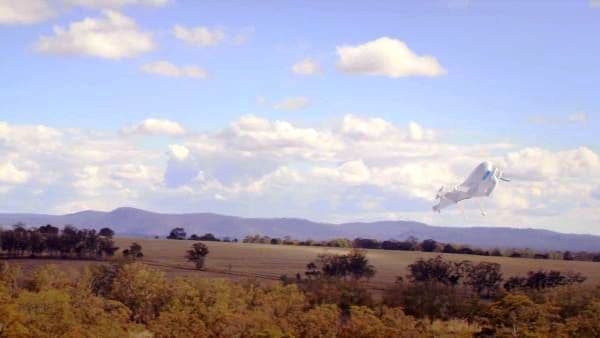Google’s Project Wing: A Drone Delivery System That Is Simply Amazing
When we heard news about Jeff Bezos’ ambitious project of delivering goods via drones we were astonished. <a href="https://www.crazyengineers.com/threads/amazon-prime-air-india-whether-flipkart-should-launch-similar-service.71893">Amazon Prime Air, India & Whether Flipkart Should Launch Similar Service?</a> the pros and cons of this service and even cracked a couple of jokes about how people could knock it right out of the sky and keep the goods to themselves. While the whole world was busy gawking at Amazon Prime Air, Google’s secret research division was busy testing another drone delivery system which was straight out of science fiction. Google [x], which has Google Glass, self-driving cars and Project Loon to its credit began secretly working on the drone delivery system two years ago. After building the prototype they set out for Australia to test the drone. They chose Australia because the country is more liberal to the use of drones.

Before unveiling Project Wing to the public #-Link-Snipped-#, the company invited <a href="https://www.theatlantic.com/technology/archive/2014/08/inside-googles-secret-drone-delivery-program/379306/?single_page=true" target="_blank" rel="nofollow noopener noreferrer">Inside Google's Secret Drone-Delivery Program - The Atlantic</a> and <a href="https://www.bbc.co.uk/news/technology-28964260" target="_blank" rel="nofollow noopener noreferrer">Google tests drone deliveries in Project Wing trials - BBC News</a> to get a sneak peek into their elusive project. Project Wing was conceptualised when Google was looking for ways to deliver defibrillator kits to people suspected of having heart attacks. The company wanted to make something that could deliver these kits faster than an ambulance. Unlike Amazon who wants delivery drones to be used for business, Google’s long term plan is to deploy drones for disaster relief.

The small white aircraft being used in Project Loon has a wingspan of nearly five feet and is driven by four propellers. The aircraft is a ‘tail sitter’ which means on ground its propellers face upward and are used to lift it up into the air. Once it reaches the appropriate height the propellers go horizontal and fly it to its destination. Unlike Amazon’s concept drone that has to touch the ground to make deliveries, Google aircraft remains in the air by switching to horizontal propellers and drops the payload to the ground with the help of a cable. Once it senses that the goods have touched the ground it detaches the cable from the parcel and pulls it back to the aircraft and returns to its base by switching horizontal propellers. Most importantly they aren’t flown by controllers, all you have to do is input the coordinates and it flies autonomously. Human override is always possible. You can get a look at this impressive feat in the video embedded below where the self-flying vehicle delivers dog treats to a farmer’s yard.
Google is now looking for partners to bring this technology into the real world. Although the company has not set any timeline for it, we speculate that it would be years before this project passes through government red tape and begins flying over our heads.

Before unveiling Project Wing to the public #-Link-Snipped-#, the company invited <a href="https://www.theatlantic.com/technology/archive/2014/08/inside-googles-secret-drone-delivery-program/379306/?single_page=true" target="_blank" rel="nofollow noopener noreferrer">Inside Google's Secret Drone-Delivery Program - The Atlantic</a> and <a href="https://www.bbc.co.uk/news/technology-28964260" target="_blank" rel="nofollow noopener noreferrer">Google tests drone deliveries in Project Wing trials - BBC News</a> to get a sneak peek into their elusive project. Project Wing was conceptualised when Google was looking for ways to deliver defibrillator kits to people suspected of having heart attacks. The company wanted to make something that could deliver these kits faster than an ambulance. Unlike Amazon who wants delivery drones to be used for business, Google’s long term plan is to deploy drones for disaster relief.

The small white aircraft being used in Project Loon has a wingspan of nearly five feet and is driven by four propellers. The aircraft is a ‘tail sitter’ which means on ground its propellers face upward and are used to lift it up into the air. Once it reaches the appropriate height the propellers go horizontal and fly it to its destination. Unlike Amazon’s concept drone that has to touch the ground to make deliveries, Google aircraft remains in the air by switching to horizontal propellers and drops the payload to the ground with the help of a cable. Once it senses that the goods have touched the ground it detaches the cable from the parcel and pulls it back to the aircraft and returns to its base by switching horizontal propellers. Most importantly they aren’t flown by controllers, all you have to do is input the coordinates and it flies autonomously. Human override is always possible. You can get a look at this impressive feat in the video embedded below where the self-flying vehicle delivers dog treats to a farmer’s yard.
Google is now looking for partners to bring this technology into the real world. Although the company has not set any timeline for it, we speculate that it would be years before this project passes through government red tape and begins flying over our heads.
0
